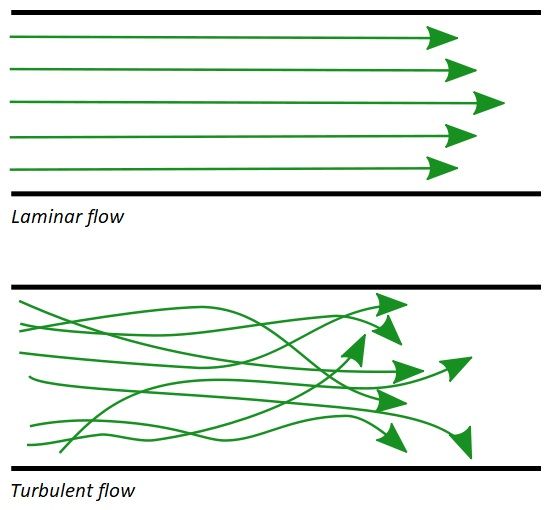Taming Turbulence Could Slash Global Energy Usage
Published on by Water Network Research, Official research team of The Water Network in Academic
Pushing stuff through pipes is an important part of the global economy. Whether it is air, water, oil, methane, or some other substance that contributes significantly to the great engine of commerce, much of it travels through pipes at some point. And pushing it along takes a lot of energy.
Inside all those pipes — whether it is a transcontinental oil conduit or the ductwork that carries fresh air to the interior of commercial buildings — turbulence occurs. That turbulence creates drag, which must be overcome by using more pumps and fans to move the stuff inside along.

According to a report by Bloomberg, fully 10% of all the electricity generated every year is consumed in the process of overcoming the effects of turbulence. Imagine if all that energy could be put to use doing more useful things, like powering electric cars?
In 2015, German physicist Bjorn Hof and several colleagues were among the first to research precisely how turbulence occurs inside pipes and conduits. Supported by research grants from the European Union, they gained a better understanding of how small eddies created at the interface between the fluid passing through a pipe and the walls of the pipe itself can aggregate into larger eddies. In some cases, those eddies actually create counterflows that travel opposite to the primary direction of travel. The amount of turbulence was found to correlate directly to the speed of the flow.
The findings from that research were published in the journal Nature but are unfortunately guarded by a pay wall. The executive summary, however, is available and says in part, “At moderate flow speeds, turbulence is confined to localized patches; it is only at higher speeds that the entire flow becomes turbulent. The origin of the different states encountered during this transition, the front dynamics of the turbulent regions and the transformation to full turbulence have yet to be explained. By combining experiments, theory and computer simulations, here we uncover a bifurcation scenario that explains the transformation to fully turbulent pipe flow and describe the front dynamics of the different states encountered in the process.”
Now, Hof, working with colleagues Jakob Kühnen and Baofang Song, has published new research that reveals novel ways they have found of controlling turbulence, chief among them installing rotors inside the pipes. One might expect introducing new things into the flow might create more turbulence but the researchers found the opposite was true. This latest report, published January 8 of this year, is not located behind a pay wall, so you can access it yourself if you enjoy reading turgid prose filled with scientific jargon. Here is what the researchers have to say in their abstract.
“We demonstrate for pipe flow that appropriate distortions to the velocity profile lead to a complete collapse of turbulence and subsequently friction losses are reduced by as much as 90%. Counterintuitively, the return to laminar motion is accomplished by initially increasing turbulence intensities or by transiently amplifying wall shear. Since neither the Reynolds number nor the shear stresses decrease (the latter often increase), these measures are not indicative of turbulence collapse. Instead, an amplification mechanism measuring the interaction between eddies and the mean shear is found to set a threshold below which turbulence is suppressed beyond recovery.”
If you are not a physicist, the salient point in that paragraph is a reduction in friction losses of up to 90%. Less friction translates directly into less energy needed to move stuff through pipes. You don’t have to be a scientist with a slide rule permanently grafted to your hip to understand why that could be a very big deal.
Source: Clean Technica
Media
Taxonomy
- Flowmetering
- Energy
- Infrastructure
- Hydraulic Structures
- Energy